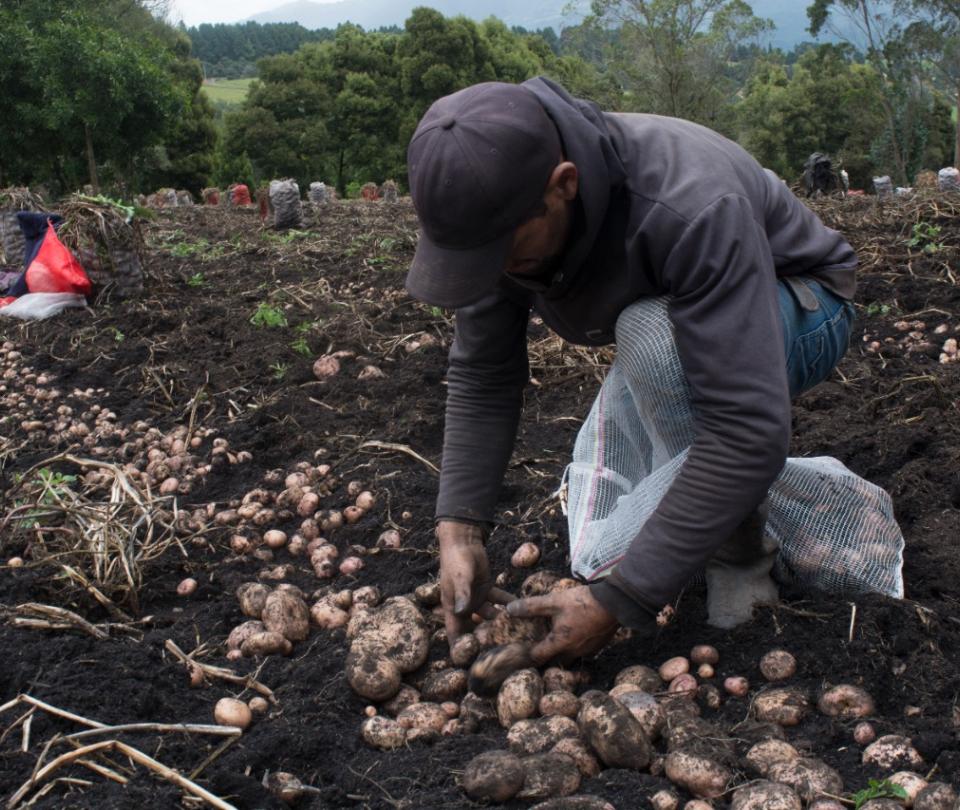Agriculture in Colombia has been facing different challenges since last year due to different situations, such as the effects of the weather on crops, and even more so due to the increase in fertilizer prices. this last It is a fact that also generates uncertainty for world agriculture.
(Read: Inflation is no longer dragged only by food and energy).
This was confirmed by ECLAC, the Food and Agriculture Organization of the United Nations (FAO) and the World Food Program, in a report where they estimate the impacts on agriculture due to the insufficiency in the production of fertilizers in the world.
According to the document, the effect of the war between Russia and Ukraine has increased the price of fertilizers, given that in 2021 the Russian Federation was the world’s largest exporter of these nitrogenous inputs. Also it was the second largest supplier of potash and the third largest exporter of phosphate fertilizers. It is noteworthy that these inputs have been excluded from the sanctions imposed on this nation by the international community, but “logistical and financial restrictions operate as barriers to trade in these inputs,” the report indicates.
For the organizations, fertilizers are becoming less affordable for agricultural producers, given that their prices in 2021 rose considerably. Also, after the start of the war, in April 2022, fertilizers reached their highest levels in several years.
The document reaffirms the argument that these inputs, together with energy, are the main item of expense for farmers in many chains.
(Also: Colombia, among countries with the highest and most static inflation in the OECD).
According to the report, the countries of Latin America and the Caribbean import about 85% of the fertilizers they use, for which they affirm that no other region in the world “depends so much” on imports of the input.
Similarly, it is stated that the production capacity of synthetic fertilizers has not increased in recent years, which implies an increase in demand and translates especially into greater dependence on imports. On the other hand, the report highlights that the production and international trade of the input are “dominated” by few countries and companies.
“Five countries produce 62% and export 55% of the fertilizers consumed in the world, while five companies (Nutrien, Yara, Mosaic, EuroChem and Israel Chemicals) concentrate 45% of the fertilizer market, estimated at US$160,000 million in 2021”, they assure.
Faced with the export of fertilizers from Russia, it is assured that Brazil is the main market for exports of the input, not only in the region, but also worldwide. For his part, Argentina, Nicaragua, Uruguay and Colombia iThey import between 10% and 20% of the Russian nation’s fertilizers.
Additionally, Brazil, Guatemala, Mexico, Costa Rica and Panama import between 20% and 30%; Suriname and Ecuador between 30% and 40%, and Peru and Honduras more than 40%.
Likewise, it is estimated that, as in the case of food, regional imports of fertilizers are affected by the rise in prices, but also by restrictions on exports.
(Keep reading: Minhacienda auctions short-term TES for $375,000 million).
“On average, 36% of the nitrogenous fertilizers, 20% of the potassium fertilizers and 19% of the phosphate fertilizers that the region imports have been affected by trade restrictions imposed in the context of the war. These values exceed 30% of imports in many countriesthey say.
And although Colombia does not distance itself from the fertilizer problem presented at the regional and global level, for Andrés Valencia Pinzón, former Minister of Agriculture (2018-2020), the outlook in Colombia means that producers are rationalizing the use of fertilizers due to the cost, and there is a probability that productivity will decrease. The former official adds that this situation is compounded by the winter wave, where there are no incentives to fertilize.
“It is important that the government and the poultry and swine industry work on the use of sanitized chicken manure, chicken manure and swine manure as substitute products for traditional fertilizers. There is abundant production of these and it can be an opportunity to improve the soils.”, says Valencia.
Additionally, Jorge Bedoya, president of the Colombian Association of Farmers (SAC), assures that fertilizers can weigh between 30% and 40% of the cost of producing agricultural products depending on the product.
“It is important to take into account that Colombia uses 2 million tons of fertilizers, most of which are imported and the situation will depend on the evolution in dollars, but also on the exchange rate,” concludes the president.
What are you working on?
Jorge Bedoya, president of the Colombian Association of Farmers (SAC), stated that it has currently been proposed to the Government make the tool that comes from the previous mandate available to the public in real time, which is the Observatory of Supervised Liberty.
(Read: Colombia, third in exports in the region in 2022, Cepal).
This figure was created in order to monitor the behavior of the prices of agricultural inputs in the country. Nevertheless, a few years ago it stopped its operation.
According to the Ministry of Agriculture and Rural Development, this tool was in force until June 30 of last year (2022).
But as a measure to address the complex situation of fertilizers that has been evident in the country, a new project to rehabilitate it was presented to the National Commission for Inputs. The portfolio ensures that this has already been approved and that it is currently in the Presidency pending approval.
BRIEFCASE












